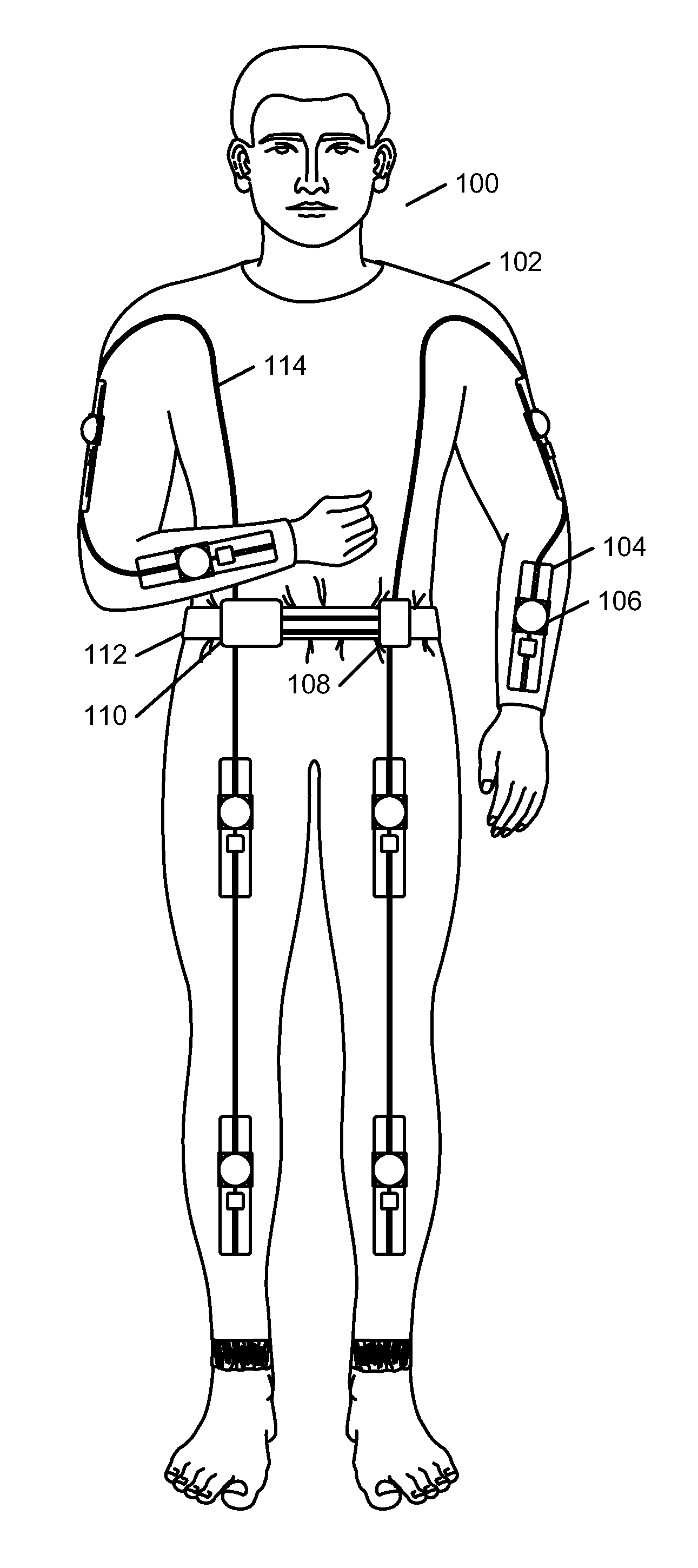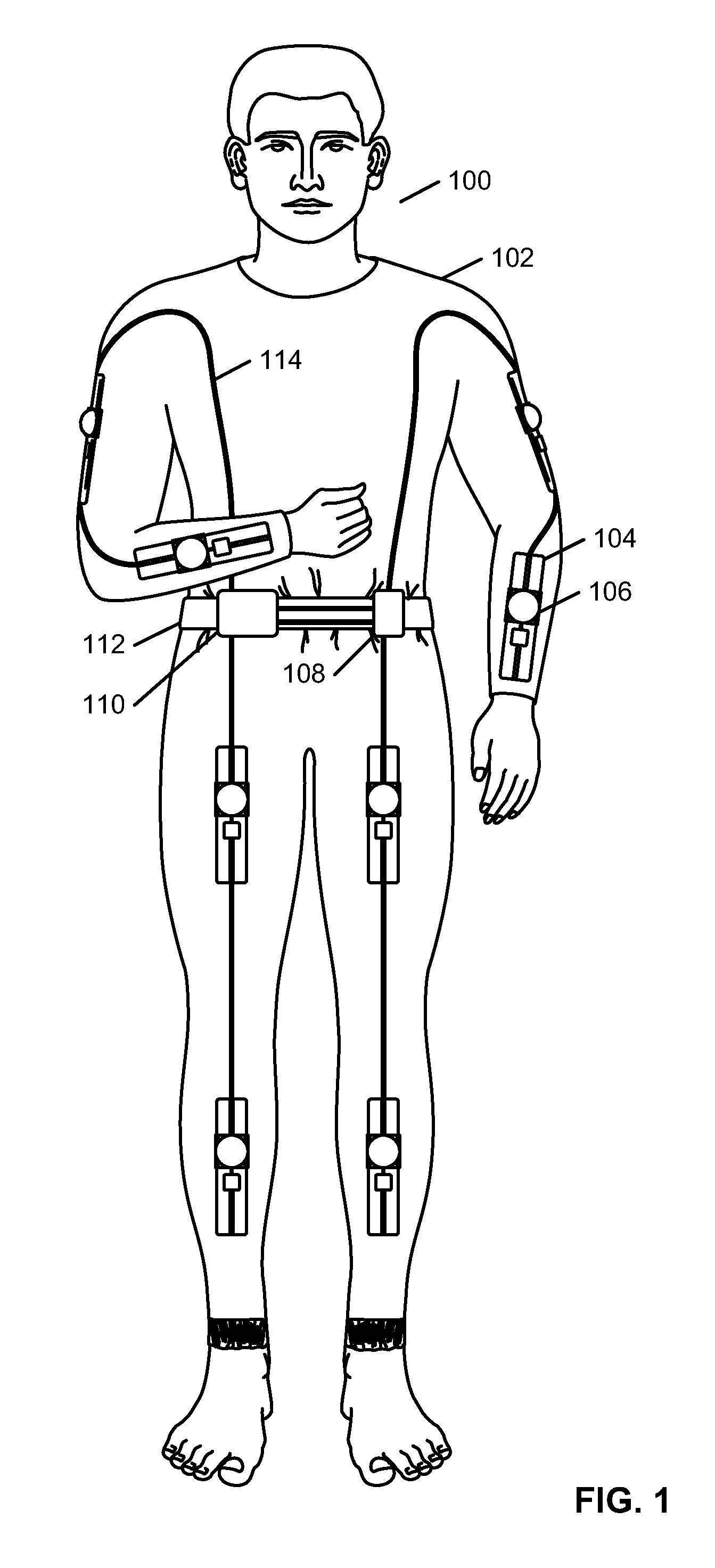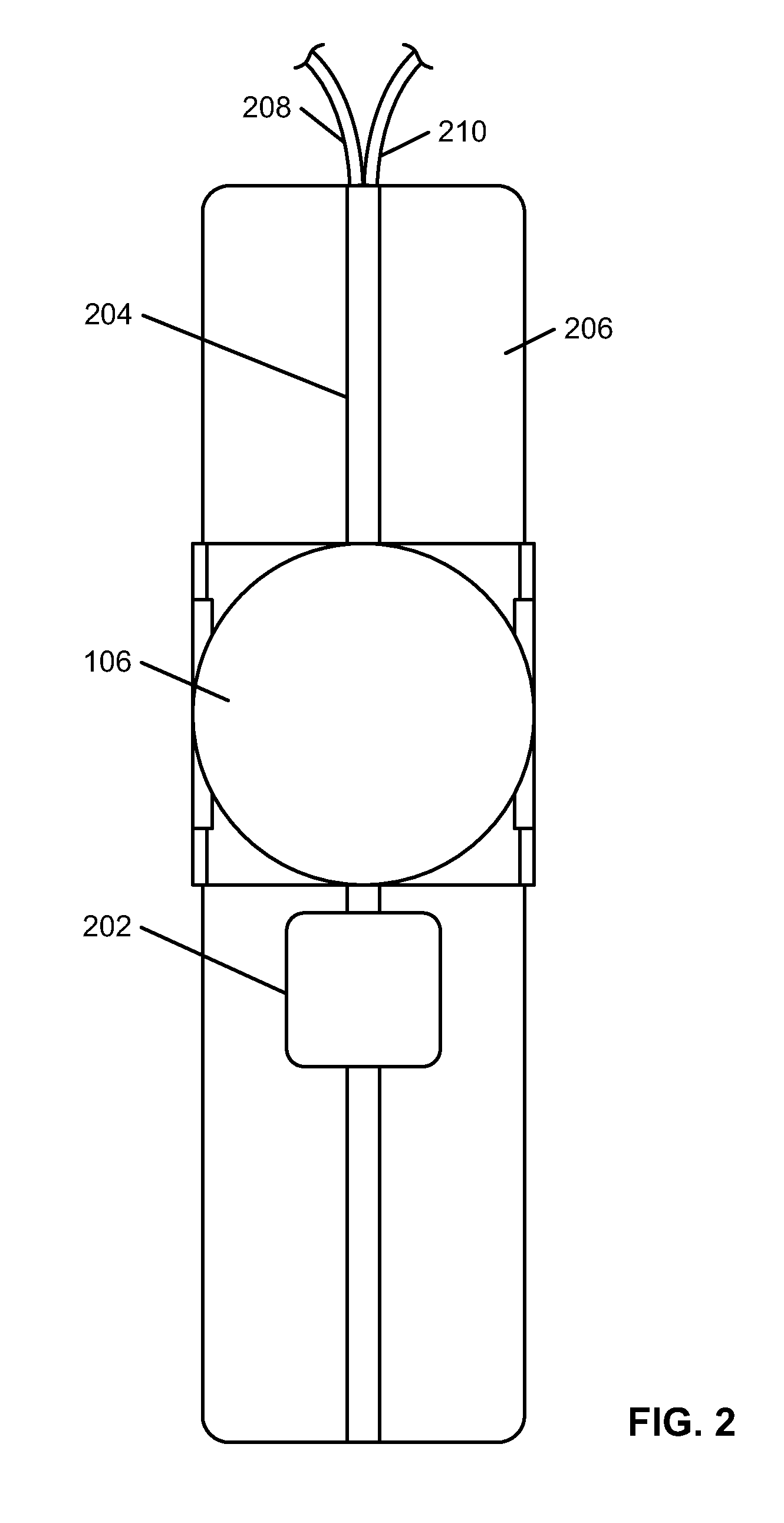Exoskeleton suit for adaptive resistance to movement
- Summary
- Abstract
- Description
- Claims
- Application Information
AI Technical Summary
Benefits of technology
Problems solved by technology
Method used
Image
Examples
Embodiment Construction
[0024]To provide an overall understanding of the invention, certain illustrative embodiments will now be described, including wearable systems and methods for providing resistance to movement. However, it will be understood by one of ordinary skill in the art that the systems and methods described herein may be adapted and modified as is appropriate for the application being addressed and that the systems and methods described herein may be employed in other suitable applications, and that such other additions and modifications will not depart from the scope thereof.
[0025]FIG. 1 shows a wearer 100 wearing an exoskeleton suit 102 that uses sensors and actuators to detect the movement and orientation of the wearer's limbs and, in response, provide resistance to certain types of motions. The suit 102 has a plurality of mounted actuator attachments 104 rigidly attached to the suit 102. Each actuator attachment 104 includes a sensor, such as an inertial measurement unit, to detect limb o...
PUM
 Login to View More
Login to View More Abstract
Description
Claims
Application Information
 Login to View More
Login to View More - R&D
- Intellectual Property
- Life Sciences
- Materials
- Tech Scout
- Unparalleled Data Quality
- Higher Quality Content
- 60% Fewer Hallucinations
Browse by: Latest US Patents, China's latest patents, Technical Efficacy Thesaurus, Application Domain, Technology Topic, Popular Technical Reports.
© 2025 PatSnap. All rights reserved.Legal|Privacy policy|Modern Slavery Act Transparency Statement|Sitemap|About US| Contact US: help@patsnap.com



